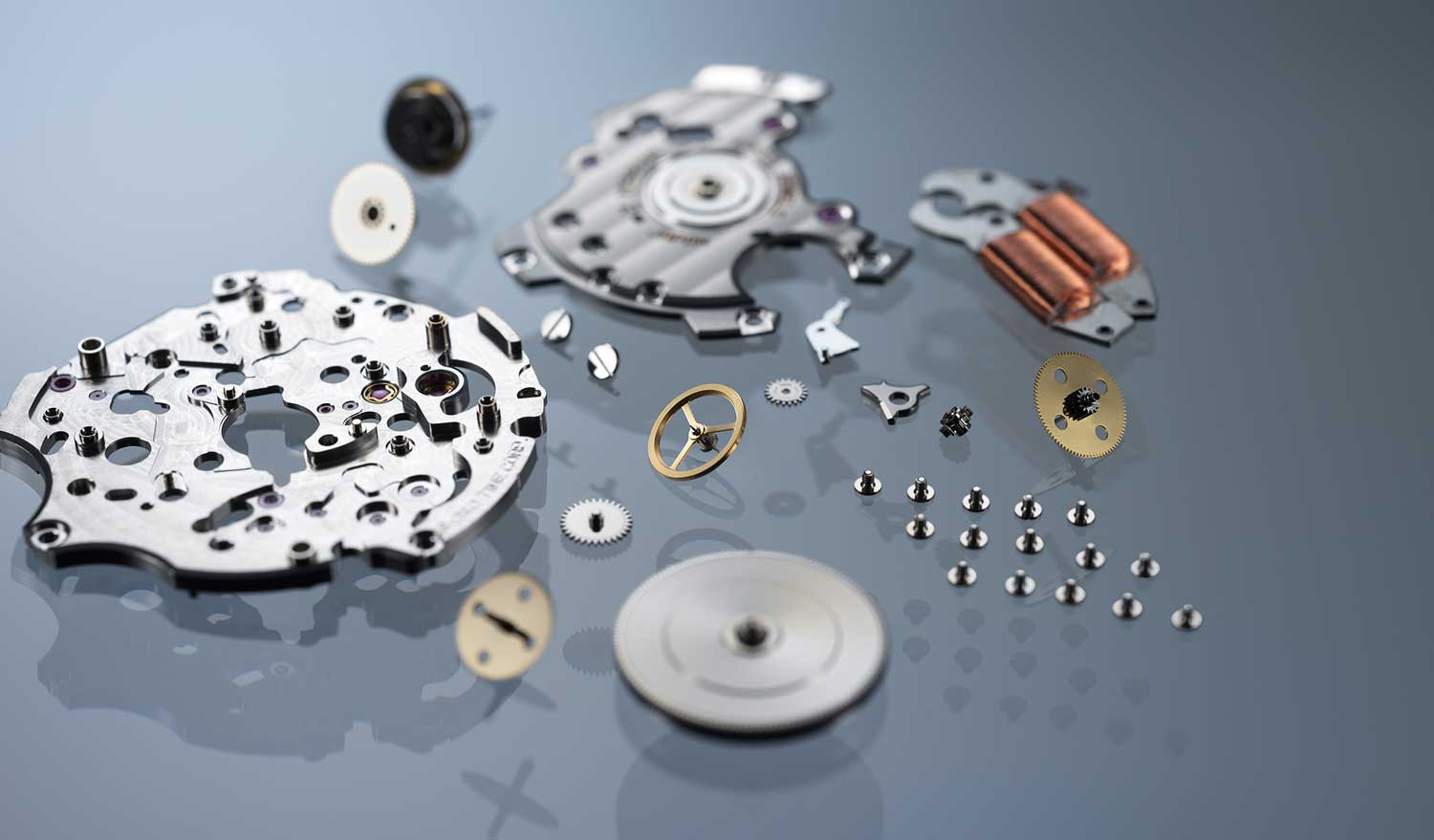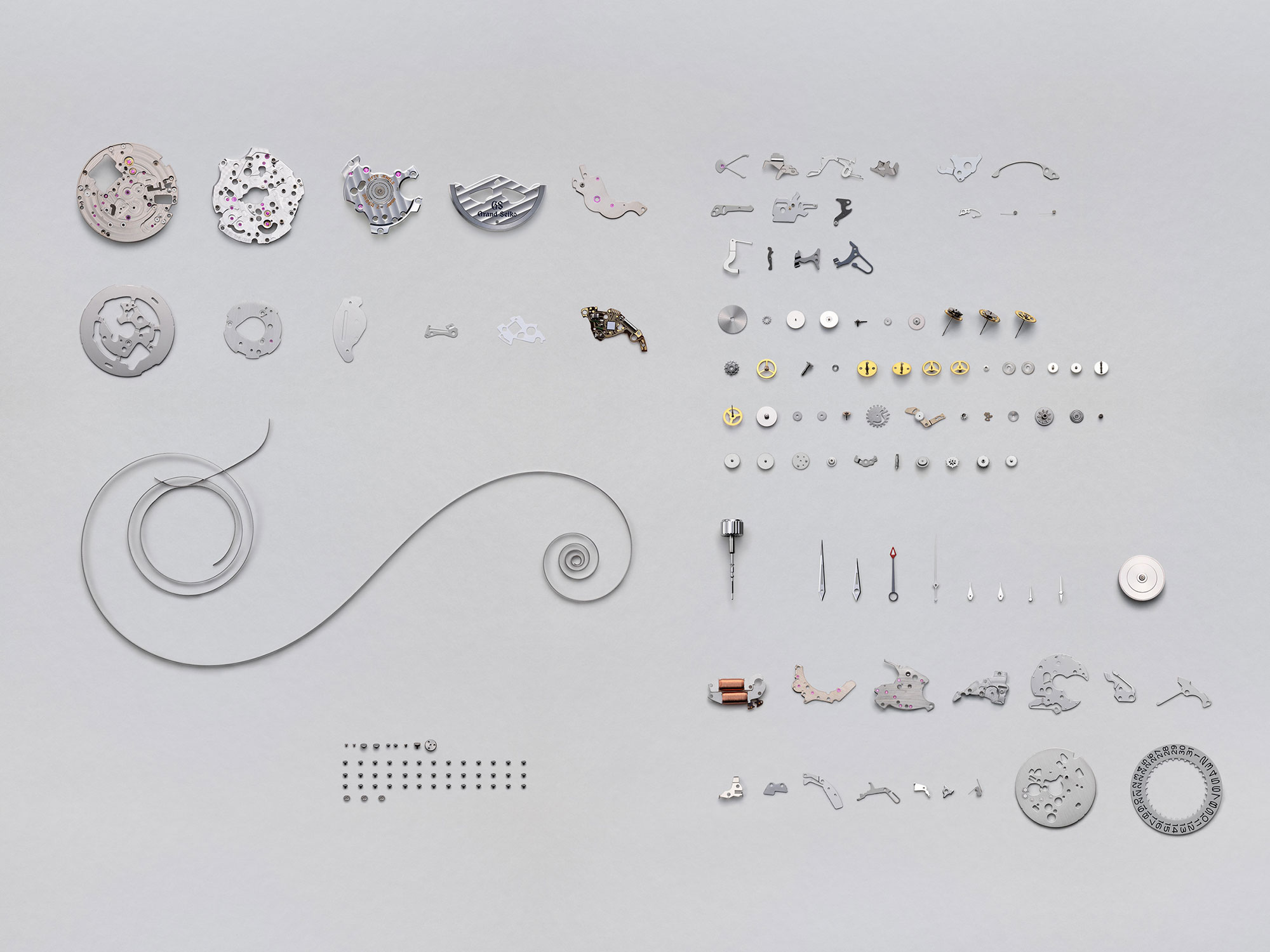
One of the most often asked questions regarding Spring Drive is whether it is automatic or quartz. This is almost certainly because, as an original movement technology, Spring Drive defies the simple categorization that most high-end watches fall into and with which most watch enthusiasts are acquainted. Spring Drive needs to be explained. That is what this article seeks to do.
Spring Drive combines the most desirable elements of both mechanical and quartz watch movements while eschewing the greatest potential weaknesses of each. Because it has a mainspring, Spring Drive boasts a higher torque than that of quartz and is in this respect more in line with a mechanical movement. This allows Grand Seiko Spring Drive movements to power watches with larger and heavier hands, including those made of gold, as is the case with certain watches from the Micro Artist Studio. And because a spring, and not a battery, provides the power of Spring Drive, the movement can be powered up on demand without the need to replace and properly dispose of a battery.

Unlike a mechanical watch, Spring Drive does not have an escapement, whether of the conventional lever type or any other variety. Instead, in Spring Drive, a mechanism called the Tri-Synchro Regulator replaces a delicate assembly of parts traditionally known for its thirst for oil and susceptibility to magnetism. We’ll explain how the Tri-Synchro Regulator works in a moment. But in a nutshell, it controls the flow of power as it is released by the mainspring while providing quartz-like accuracy of +/- 15 seconds per month (one second per day) in the case of the general 9R Spring Drive calibers and +/- 10 seconds per month (0.5 seconds per day) in the case of movements such as the 9RA2, 9RA5 and 9R01.

Since the “mechanical side” of a Spring Drive movement includes a mainspring, Grand Seiko can offer 9R movements that wind up as diversely as mechanical movements do, which is to say there are both automatic and manual-wind variations of Spring Drive. What is more, the elaborate decoration, jeweling, and finishing that have long burnished the mechanical watch’s status as a lifetime product to be collected, appreciated, and passed down are also observed in a finely hand-assembled Spring Drive movement. There is much in common between these products.
But back to the Tri-Synchro Regulator, the thing that makes Spring Drive so singular and special. How does it do what it does? In the Tri-Synchro Regulator, a wheel at the end of the gear train called the glide wheel spins eight times per second and acts with a stator to generate power. As the glide wheel turns, it generates an electrical current, which activates a quartz oscillator and IC. The quartz oscillator’s vibration of 32,768 Hz provides a reference signal to the IC, which compares the highly accurate rate of quartz to the motion of the glide wheel, applying a magnetic break when it spins too fast, thus ensuring the hour, minute, and seconds hands move with the precision of a quartz watch.

If you look at a running Spring Drive watch movement, the absence of the flickering vibration of the escapement is apparent, just as holding it to the ear reveals a silence all its own. Nonetheless, the glide wheel can be seen spinning away, making its eight revolutions per second as the seconds hand on the dial flows effortlessly forward, reflecting the natural flow of time.